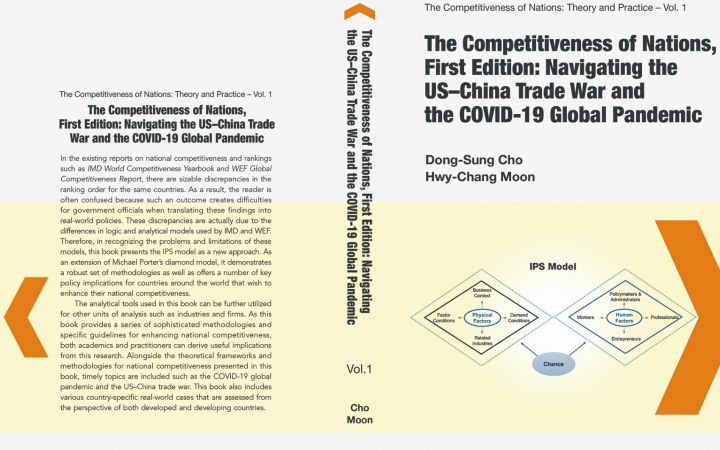UNITAR, the Institute for Industrial Policy Studies (IPS), and the Taylor Institute at Franklin University Switzerland (FUS), collaborate on National Competitiveness Report: Two rankings for each nation with low cost strategy and differentiation strategy. The results of the IPS National Competitiveness Report were released on October 28, 2021, in a public conference of National Competitiveness organised by IPS and FUS, and co-hosted by UNITAR. UNITAR will be involved in fully contributing to the 2022 Report.
Three Models in National Competitiveness Studies
Currently, there are three institutions that announce their results on national competitiveness in Switzerland every year. IMD (The International Institute for Management Development) and WEF (The World Economic Forum) show only one ranking, while IPS Switzerland has two rankings based on cost leadership and differentiation strategies.
IMD is a Swiss business school that categorizes national competitiveness as a good business environment of a country for global companies to invest in. In the IMD 2021 report, Malaysia, which has a good investment environment, ranked 25th out of 64 countries, a position notably higher than Japan’s 31st. On the other hand, WEF is a Swiss non-profit corporation which measures national competitiveness as the productivity of industries owned by individual countries. In the WEF 2019 report which is the most recent report for national rankings so far, Japan, which has high productivity, was ranked 6th out of 141 survey countries, much higher than Malaysia’s 27th.
The IPS report presents a different approach. Unlike IMD and WEF, which evaluate only the resource conditions of each country without considering its national strategy, IPS divides the strategic options into two nationwide strategies: low cost and differentiation. This can offer markedly different outcomes. The U.S. ranks only 13th if it uses a low-cost strategy, but rises to 8th with a differentiation strategy. By contrast, China ranks 4th if it uses a low-cost strategy, yet falls to 15th if it uses a differentiation strategy. The reason for such a difference is that the differentiation strategy is suitable for countries that can produce high-quality products while the low-cost strategy is suitable for countries with abundant resources.
Four types of countries are identified in this presentation. Type 1, such as Australia and Canada, has both abundant resources and high-quality production capacity. They are high in both low-cost and differentiation rankings. Type 2, such as France and Korea, is a high-quality production country. They are poorly ranked with low cost strategy, but move up high with differentiation. Type 3, such as Saudi Arabia and Russia, relies on abundant resources. They are high in the low-cost ranking, but low in the differentiation ranking. Type 4, such as Kenya and Oman, does not have either abundant resources or high-quality production capacity. They are low in both rankings.
The IPS Methodology and Its Strategic Implications to Switzerland
To determine national competitiveness, IPS ranking uses Dong-sung Cho’s “9-Factor Model” which consists of four physical factors, four human factors, and opportunity conditions. The physical factors consist of production conditions, management conditions, related industries, and demand conditions, and the human factors. consist of workers, politicians and administrators, entrepreneurs, and professionals.
IPS also released more specific results of the 98 criteria which constitute the 9 factors in the model. By analyzing the elements, governments of the 62 countries can develop specific national strategies to enhance their respective rankings.
For example, Switzerland falls to 12th place when it uses a low-cost strategy, but rises to 4th place when it adopts a differentiation strategy. Such a dramatic change can be explained by the fact that Switzerland is already an advanced economy that can produce high-quality products. But Switzerland has a chance for further improvement in national competitiveness.
Looking at Switzerland’s physical factors in the model, demand conditions (3rd), related industries (3rd), and business context (6th) are at the top, and factor conditions (39th) are at the intermediate level. Among the human factors, policymakers and administrators (3rd), entrepreneurs (8th) and professionals (4th) remain at the top, and workers (41st) remain at the bottom.
It would appear to be natural for Switzerland to improve the factors which are ranked low, such as factor conditions and workers. But such an effort would only enhance Swiss ranking with a low-cost strategy, which may not be an ideal strategy. IPS model suggests Switzerland to improve demand conditions among the physical factors, and professionals among the human factors. IPS model further suggests such subfactors as the market size and quality to improve demand conditions, and personal competence and social context to improve professionals.







